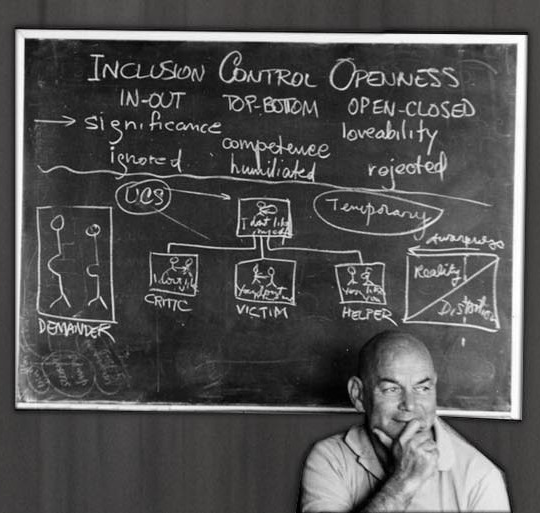History of The Human Element
 In 1952 Will Schutz Ph.D was recalled to the United States Navy to help them understand how to make their people work most productively while functioning cooperatively at the highest level of efficiency. In his study, he found there were two things necessary for groups to work well together: technical competence and compatibility.
In 1952 Will Schutz Ph.D was recalled to the United States Navy to help them understand how to make their people work most productively while functioning cooperatively at the highest level of efficiency. In his study, he found there were two things necessary for groups to work well together: technical competence and compatibility.
In 1958 his research led to the creation of FIRO Theory and FIRO-B® (now Element B), a psychometric instrument that predicted the behavior of people in their assigned teams. Through his research he found that if the Navy assembled their teams according to FIRO-B results, those teams would be productive 75% of the time, up from the 50% productivity rate they had before he conducted his research. Although a significant increase, Dr. Schutz was not satisfied. He wanted to know what explained the remaining 25% in lost productivity.
Believing that there was much more to understanding human behavior than the prevailing cognitive theories, he spent the next two decades going beyond traditional psychology. His study went into deeper motivations by exploring emotions, the functioning of the body, the mind, and the use of experiential methods to understand what helped people achieve more and make real/lasting change. He finally concluded that the reason teams still got stuck, even when they were compatible, was not because people are different, but rather because one or more of the people involved became rigid in their behavior.
In 1980, he took this body of knowledge and called it The Human Element, as it was this variety of approaches for developing the full potential of each person and each interaction between people that made the real difference. In the course of creating The Human Element, he revised FIRO-B®, creating its next iteration, calling Element B. At the same time he expanded and improved FIRO theory, creating additional FIRO-based instruments, calling them the Elements of Awareness. These instruments were specifically designed to be used in training and are at the core of The Human Element Approach.